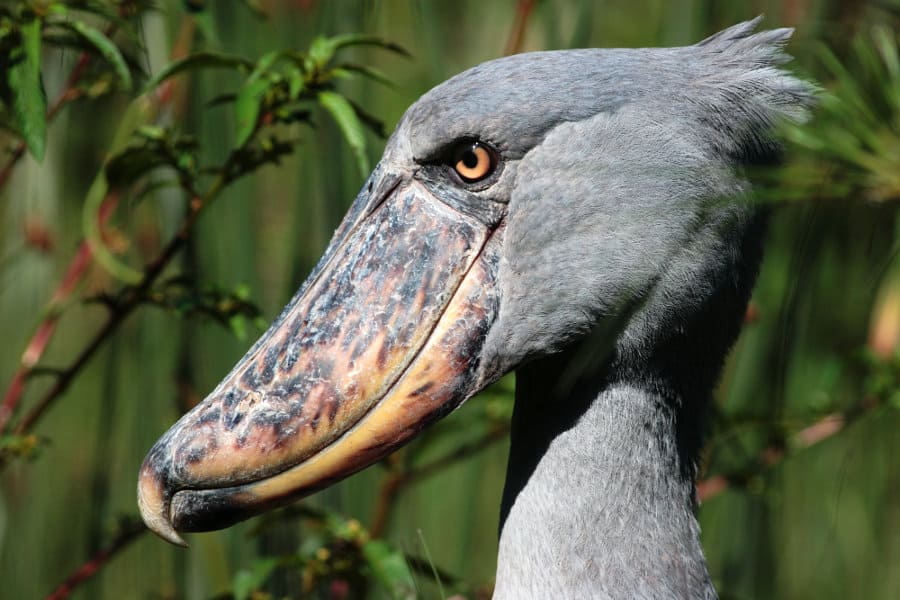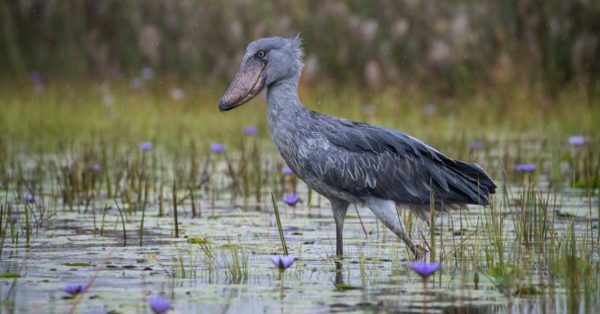

However, in reality even newborn lechwe are probably too big – any shoebill that ate one is likely to still be suffering indigestion.

A tantalizing observation from 1961 suggested that shoebills in the Bangweulu Swamps might even eat newborn black lechwe, a type of antelope that feeds out on the plains during daylight but frequently hides in dense swampland by night. Prey items recorded include water snakes, monitor lizards, turtles and, remarkably, young crocodiles (apparently, adult crocodiles sometimes reciprocate and eat shoebills). Maybe that individual had also missed its vocation: the shoebill hunts many species besides fish. “We found one trying to catch catfish – but I think it was a juvenile, because it wasn’t a very good fisher. “We particularly wanted shots of a shoebill hunting, since it had hardly ever been filmed before,” says Alex Lanchester, the BBC’s director on location. Its collapse is so complete, and it fishes in waters that are so choked with underwater vegetation, that the bird often has to disentangle its own body from the greenery before it can swallow its prey.

A flurry of struggle usually follows, as a shoebill often takes some 10 minutes to regain its balance. Ifs a splash-and-grab raid, the bill’s hook puncturing the fish’s body. Though ‘hunf implies a certain degree of activity -instead the shoebill is famously deliberate and slow-moving, standing at the edge of the water in a statuesque pose (it has been recorded staying completely motionless for over half an hour) yet ready to strike.įrom a state of near-stillness the mighty bird collapses forward, head and bill thrust down, wings raised, feet unmoved. The shoebill also hunts catfish and tilapias – indeed anything, really, of the right size. One of the shoebill’s favourite prey is the African lungfish, a primitive species that must regularly break the surface to gulp air – one strange African icon eaten by another. The bill is a perfect adaptation for catching the large fish that constitute the bird’s staple diet. The fit of the mandibles endows the shoebill with a decidedly sinister ‘smile’ which, combined with maniacally staring yellow eyes and the small crest on the head, creates the impression that you could be seeing one of the recently unearthed ‘dino-birds’. The bill’s shape is often compared to a Dutch dog, though you would be suspicious of anybody sporting footwear with such a vicious spike at one end – and you’d be still more worried about the fact that the edge of the bill is razor sharp, keen enough to decapitate a very large fish. What sets it apart is its bulbous and capacious bill, 23cm long and 10cm broad (its scientific name, Balaeniceps rex, means literally ‘king whale-head’). The shoebill is a peculiar-looking bird with a singular ecology. And that, of course, makes it the perfect subject for a groundbreaking documentary on Africa’s less well-known wildlife.


 0 kommentar(er)
0 kommentar(er)
